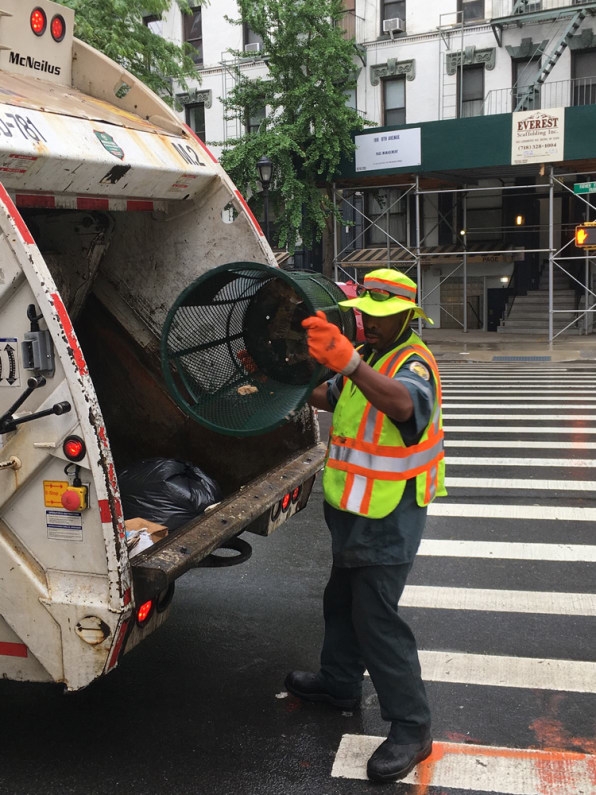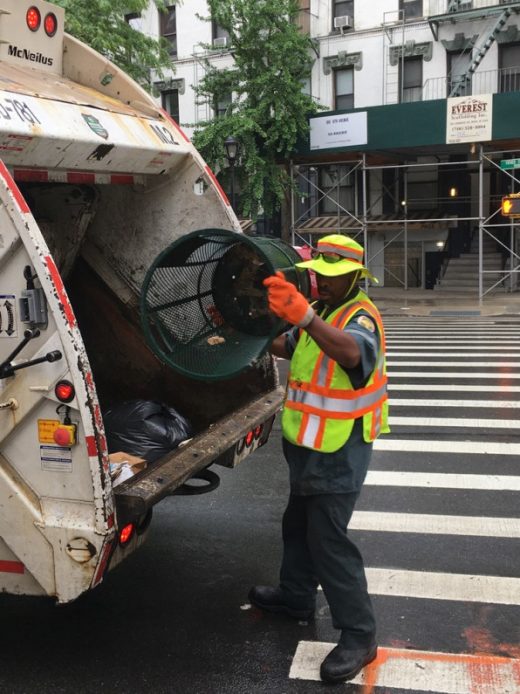The quest to redesign NYC’s garbage cans
There’s a certain symmetry to the unusual way New York deals with its garbage. Unlike most other cities, New York has no regular alleys–a fact for which we can thank the planners of the 1811 street grid, who excluded alleys to cram as much usable real estate into Manhattan as possible. So instead of hiding our unsightly bags behind buildings, we put them right onto the sidewalk. Brutal honesty through street design. It feels apt.
That–among other factors, like the sheer density of the city–has made New Yorkers uniquely attuned to garbage. “One of the things New Yorkers respond to almost immediately is anything having to do with litter,” says Department of Sanitation Commissioner Kathryn Garcia. “They have a very visceral response to when litter is not in its place.” When her department puts a new garbage can on a city street corner, locals and press will show up for an official unveiling–there’s even a black velvet covering for the occasion. “People feel really strongly,” Garcia says. “They want to come out!”
The city has more than 23,000 garbage cans, and the most common version–a small, metal mesh basket–hasn’t changed in almost 100 years, thanks to its sturdy, light design. But Garcia’s department and the rest of the city are now working toward a major goal: Sending zero waste to landfills by 2030. And while garbage cans only account for 2% of the city’s refuse, they influence its trash culture in other ways. Garcia compares them to a billboard–a message that the city cares about waste and is doing more.
So, after almost a century, the Department of Sanitation, along with the nonprofit Van Alen Institute, the Industrial Designers Society of America, and the American Institute of Architects New York, is now asking for designs as part of an open competition to identify the city’s next garbage can. Finalists will receive $40,000 to produce prototypes that will experience trial by fire on city streets in spring 2019.

Garbage cans are universal street furniture, but a huge chunk of their users are “invisible”: sanitation workers. The RFP appeals to designers to think about issues from not just the perspective of someone who throws something away in a garbage can, but the person who has to lift it up hundreds of times every day. The team behind the competition interviewed sanitation workers and shadowed them on an early-morning shift before writing the brief for designers, and issues like weight–less than 32 pounds–and stability in high winds are key. So is rat abatement, another safety issue for sanitation workers. “Obviously, thinking about it from the [typical] user’s perspective, you think, ‘Oh, rats are gross!,’” says Jessica Lax, Van Alen’s director of strategic initiatives (including its new Product Placed program).”But it also poses a danger to the worker. So it’s really great that the city is tackling that issue and trying to make that improvement for both the public and the workers.”
What’s more, as designers prepare their submissions over the next month, they’ll need to think about future-proofing, i.e., considering how their designs could be repurposed down the line as the city’s trash output changes. More U.S. cities are moving to ban plastic bags and straws–a minuscule step toward a more sustainable trash footprint, but also evidence that ideas around waste are slowly starting to shift. When the last can was designed in 1930, Americans were only just beginning to ramp up their gargantuan garbage production. The city’s new basket wants to be part of the reversal of that trend. “It gives us this opportunity to engage with New Yorkers, around ‘What are the goals of the city? What’s the city going to be in 10 years? What’s the city going to be in 20 years?,’” Garcia says.
The larger goal is to move New York toward a healthier culture around waste. “We want to change the conversation we’re having with the public,” she adds, “from thinking about trash as trash, to thinking about everything you’re throwing away could have a value.”
The first phase of the competition ends in September, and the prototype cans will be tested in New York next spring.
(15)


